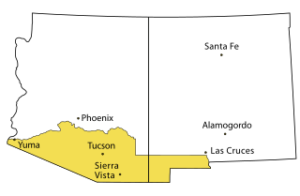
Texas State Flag
Texas became the twenty-eighth state of the United States in 1845. Its name derives from the Caddo tavshas, meaning friends. Its nickname is the Lone Star State, and Austin is the capital. While it is the second largest state of the Union, more than three-fourths of the population lives in cities. Houston, Dallas, and San Antonio are listed in America’s ten largest cities. At one time the region that is now Texas belonged to Spain. Then Mexico claimed ownership. For a while Texas was an independent country, and then it joined the United States. Oil is a major natural resource, and the state produces cotton and cattle. The state dish is chili. Children could visit an Internet site at: Texas. They could also make and eat chili.

